JG Ballard used his experiment novel, The Atrocity Exhibition, as an instruction manual in disrupting the mass media mind-meld of a dystopian landscape overrun with technological white noise. Watch the piece on Ballard and the Motorcar, that careens across the landscape of his controversial novel, Crash.
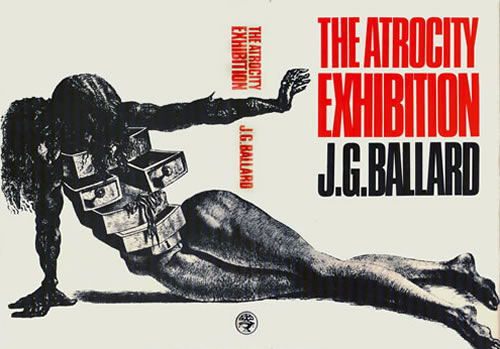

Ballard’s Car Crash Fetishism and Other Dystopian Visions
James Graham “J. G.” Ballard (15 November 1930 – 19 April 2009) was an English novelist, short story writer, and essayist. Ballard came to be associated with the New Wave of science fiction early in his career with apocalyptic (or post-apocalyptic) novels such as The Drowned World (1962), The Burning World (1964), and The Crystal World (1966). In the late 1960s and early 1970s Ballard focused on an eclectic variety of short stories (or “condensed novels”) such as The Atrocity Exhibition (1970).
“Deserts possess a particular magic, since they have exhausted their own futures, and are thus free of time. Anything erected there, a city, a pyramid, a motel, stands outside time. It’s no coincidence that religious leaders emerge from the desert. Modern shopping malls have much the same function. A future Rimbaud, Van Gogh or Adolf Hitler will emerge from their timeless wastes.”
— J.G. Ballard, The Atrocity Exhibition
![The Atrocity Exhibition (JG Ballard and the Motorcar) [1970]](https://wilderutopia.com/wp-content/plugins/wp-youtube-lyte/lyteCache.php?origThumbUrl=https%3A%2F%2Fi.ytimg.com%2Fvi%2FQRxpZ142lkI%2F0.jpg)
Watch this video on YouTube
The Atrocity Exhibition (J.G. Ballard and the Motorcar) [1970]: Directed by Harely Cokliss and features Ballard talking about car crash fetishism and the response to the bleak modern landscapes dominated by industrial monotony and the irrational violence of the technology-infused world which would coalesce into his controversial novel Crash, published in 1973. Intercut with footage of test motor crashes and Ballard himself are semi-dramatized scenes with actress Gabrielle Drake. Remarkably effective and disturbing.
“Apocalypse. A disquieting feature of this annual exhibition — to which the patients themselves were not invited — was the marked preoccupation of the paintings with the theme of world cataclysm, as if these long-incarcerated patients had sensed some seismic upheaval within the minds of their doctors and nurses.” — J. G. Ballard, “Atrocity Exhibition”
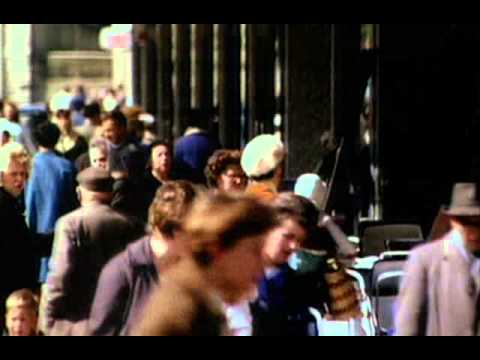
Watch this video on YouTube
The South Bank Show: J.G. Ballard (ITV, 2006) – click link even though it lacks a still photo
“The media landscape of the present day is a map in search of a territory. A huge volume of sensational and often toxic imagery inundates our minds, much of it fictional in content. How do we make sense of this ceaseless flow of advertising and publicity, news and entertainment, where presidential campaigns and moon voyages are presented in terms indistinguishable from the launch of a new candy bar or deodorant?
“What actually happens on the level of our unconscious minds when, within minutes on the same TV screen, a prime minister is assassinated, an actress makes love, an injured child is carried from a car crash? Faced with these charged events, prepackaged emotions already in place, we can only stitch together a set of emergency scenarios, just as our sleeping minds extemporize a narrative from the unrelated memories that veer through the cortical night. In the waking dream that now constitutes everyday reality, images of a blood-spattered widow, the chromium trim of a limousine windshield, the stylised glamour of a motorcade, fuse together to provide a secondary narrative with very different meanings.” — J.G. Ballard, The Atrocity Exhibition
Ballard’s post-apocalyptic dystopia genre in Crash had cars symbolizing the mechanization of the world and man’s capacity to destroy himself with the technology he creates. The characters (the protagonist, called Ballard, included) become increasingly obsessed with the violent psychosexuality of car crashes in general, and celebrity car crashes in particular. Ballard’s disturbing novel was turned into a controversial—and likewise disturbing—cerebral film by David Cronenberg.
In a sense, the phrase “atrocity exhibition” is a strictly literal description of this media landscape as it emerged in the early 1960s, populated by images of Vietnam, the Kennedys, Martin Luther King and Malcolm X. The novel deals with the violence that hemorrhaged in the 1969 in which it was published: Manson, Altamont, War across the USA. But, for Ballard, the events of 1969 are merely the culmination of a decade whose guiding logic has been one of violence; a mediatized violence, where “mediatization” is a profoundly ambiguous term which doesn’t necessarily imply a disintensification. As they begin to achieve the instantaneous speed Virilio thinks characteristic of postmodern communication, media (paradoxically) immediatize trauma, making it instantly available even as they prepackage it into what will become increasingly preprogrammed stimulus-response circuitries.”
Mark Fisher. ‘Flatline Constructs — The Atrocity Exhibition’
H-T: UbuWeb
Updated 1 September 2024




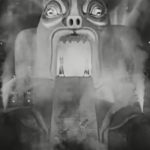
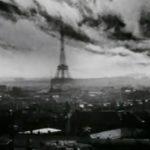
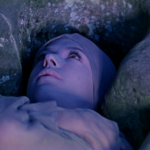






Pingback: Lucifer Rising: God of Light and Color in Experimental Film | WilderUtopia.com
Pingback: Generation Anthropocene: Altered Planet, Wild Literature | WilderUtopia.com
Pingback: Climate Fiction Origins: J.G. Ballard's Visionary Worlds - WilderUtopia